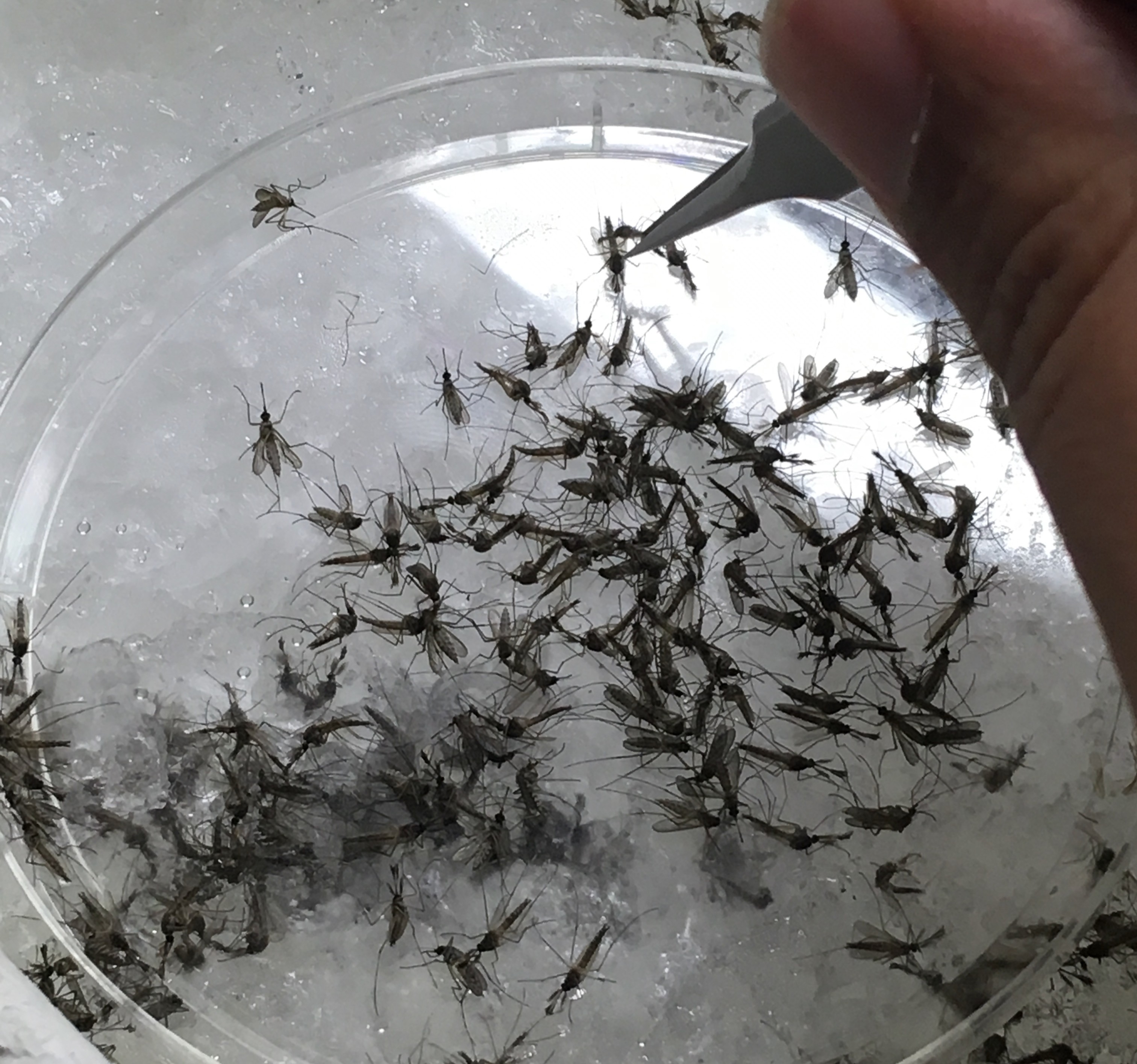Un estudio desvela la composición de la microbiota del mosquito Culex perexiguus, principal vector del virus del Nilo

Imagen tomada durante el proceso de identificación de mosquitos capturados. Foto: Josué Martínez de la Puente
Un equipo científico liderado por la Estación Biológica de Doñana-CSIC ha realizado la primera caracterización de la microbiota bacteriana de la especie de mosquito Culex perexiguus, principal vector del virus del Nilo Occidental en Andalucía. El trabajo explora además la potencial asociación de la composición de la microbiota de estos mosquitos con la infección por el virus del Nilo Occidental. El trabajo cuenta con la colaboración de miembros del Instituto de Investigación Biomédica de Málaga, la Universidad de Granada, el CIBER de Epidemiología y Salud Pública y el CIBER de Fisiopatología de la Obesidad y Nutrición, entre otras instituciones.
La microbiota de los mosquitos, es decir, el conjunto de microorganismos que están presentes en estos insectos, juega un papel clave en su biología y capacidad de transmisión de patógenos. Las bacterias de esta microbiota pueden modular la respuesta inmunitaria del mosquito, competir con los patógenos por recursos o incluso liberar compuestos que afectan el desarrollo de patógenos en estos insectos. Identificar la composición de la microbiota de los mosquitos en la naturaleza es esencial para comprender la epidemiología de transmisión de patógenos en el área y, potencialmente, diseñar estrategias innovadoras de control de enfermedades de transmisión vectorial.
Los mosquitos incluidos en este estudio se capturaron en la provincia de Sevilla durante el brote causado por el virus del Nilo Occidental en 2020. Utilizando técnicas moleculares, el equipo científico identificó que las bacterias predominantes en la microbiota de Culex perexiguus pertenecían a las familias Burkholderiaceae y Erwiniaceae. Por otro lado, las bacterias del género Wolbachia, que bloquean la replicación del virus en otras especies de mosquitos, fueron poco comunes en Culex perexiguus.
“Las diferencias en la microbiota de Culex perexiguus con respecto a la identificada en otras especies de mosquitos podrían ayudarnos a comprender el papel principal de Culex perexiguus en la transmisión del virus del Nilo Occidental”, señala Marta Garrigós, investigadora predoctoral de la Estación Biológica de Doñana-CSIC y autora principal del estudio.
Por otro lado, a pesar de la relevancia de la microbiota en la competencia vectorial, no se encontraron diferencias significativas en la diversidad bacteriana entre los mosquitos infectados y no infectados por el virus.
“Entre otras posibilidades, esto podría deberse al hecho de haber analizado muestras de mosquitos agrupando varios individuos, lo que podría eclipsar las diferencias a nivel de individuo”, explica Josué Martínez de la Puente, científico de la Estación Biológica de Doñana e investigador principal del proyecto. No obstante, también señala que “estos resultados resaltan la importancia de realizar futuros estudios bajo condiciones controladas de laboratorio, para entender mejor la relación entre la microbiota de los mosquitos y su capacidad para transmitir patógenos”.
Referencia
Marta Garrigós, Mario Garrido, María José Ruiz-López, María José García-López, Jesús Veiga, Sergio Magallanes, Ramón Soriguer, Isabel Moreno Indias, Jordi Figuerola, Josué Martínez-de la Puente. Microbiota composition of Culex perexiguus mosquitoes during the West Nile virus outbreak in southern Spain. PLos One. https://doi.org/10.1371/journal.pone.0314001